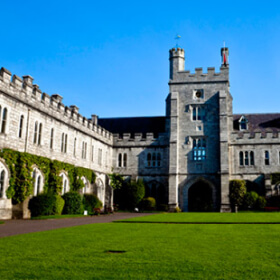Blog
Child and Youth Friendly Justice for the Climate Crisis: Relying on the UN Convention on the Rights of the Child
.png)
As the climate crisis intensifies, children and youth are stepping into the spotlight as prominent activists and litigants. From leading global grassroots movements to raising their voices through the courts, their efforts are shaping the global conversation on climate justice. But are justice systems well-equipped to support them? Prof. Aoife Daly highlights in recent publication the urgent need for child-friendly justice in addressing climate issues, grounded in the principles of the UN Convention on the Rights of the Child (CRC).
What is Child-Friendly Justice?
Child-friendly justice, as defined by the Council of Europe, ensures that legal processes are accessible, age-appropriate, speedy, diligent, adapted to children’s needs and respectful of their rights. It demands a system where children can understand and actively participate in proceedings while preserving their dignity and integrity.
In the climate justice arena, this approach is more critical than ever. Legal actions such as Sacchi et al. v. Argentina, Neubauer et al. v. Germany, and Juliana v. United States showcase the growing role of young people in holding governments and corporations accountable for climate inaction. However, barriers remain, including limited access to justice systems and societal assumptions about children’s competence.
Key Principles for Child-friendly Justice
The CRC provides a useful basis for organising an approach to child/youth-friendly climate justice based on four essential principles: access, participation, interests, and judgements.
- Access: courts and complaints mechanisms
Children’s ability to invoke their rights in court, as guaranteed by the CRC in art. 2 (non-discrimination), 12 (rights to be heard) and 24 (right to a healthy environment), is often hampered by systemic hurdles. For example:
- Many nations do not allow the CRC to be directly enforced in domestic courts.
- Those under 18 years old typically require a litigation guardian, which can limit their autonomy.
- Courts continue dismissing children’s applications on grounds of admissibility. International courts must continue recognising children as victims of climate harms, including those caused across borders.
- Participation: Being active, supported participants
Art 12., the right to be heard, is a cornerstone of the CRC. For young people to fully participate, they need accessible information, supportive legal practitioners, and protection from potential backlash. This involves ensuring they understand proceedings and are equipped to make informed contributions. Practitioners must also challenge their assumptions about children’s maturity and capability to engage in legal action.
- Interests: Children/youth adequately considered in all matters.
As enshrined in article 3, the CRC mandates that the best interests of children should be a primary consideration in all decisions affecting them. For climate justice, this means states must explicitly address how children’s interests are weighed in decisions, whether in individual cases or broader policies. Transparency in this process is essential to ensure accountability.
- Judgments: Children’s rights awareness and information
Judges play a pivotal role in advancing child-friendly justice by interpreting laws through a children’s rights lens. Proactive engagement with principles like the best interests of the child can help ensure that rulings reflect the urgency of the climate crisis and the disproportionate impact it has on younger generations.
Supporting Young Climate Advocates
Much more research is required in this area. There is much to learn from the experiences of strategic litigation occurring recently. That’s why we need to hear more from young climate advocates about how to ensure a children’s rights-based experience. Efforts like the Youth Climate Justice project try to amplify young voices and foster a rights-based approach to climate justice.
Why It Matters
The climate crisis poses an existential threat, with children and youth bearing its long-term impacts. Ensuring that justice mechanisms are suited to their unique characteristics is essential for advancing climate justice.
As we move forward, the question is no longer whether children and youth should be part of the climate justice movement—they already are. Instead, the focus must shift to how we can build systems that enforce their rights, amplify their voices, and pave the way for a healthy, sustainable future.
This article was first published in the International Journal of Children's Rights on 24th October 2024. Access here to read the full article: https://brill.com/view/journals/chil/32/3/article-p632_006.xml
To download an article summary, access here.

